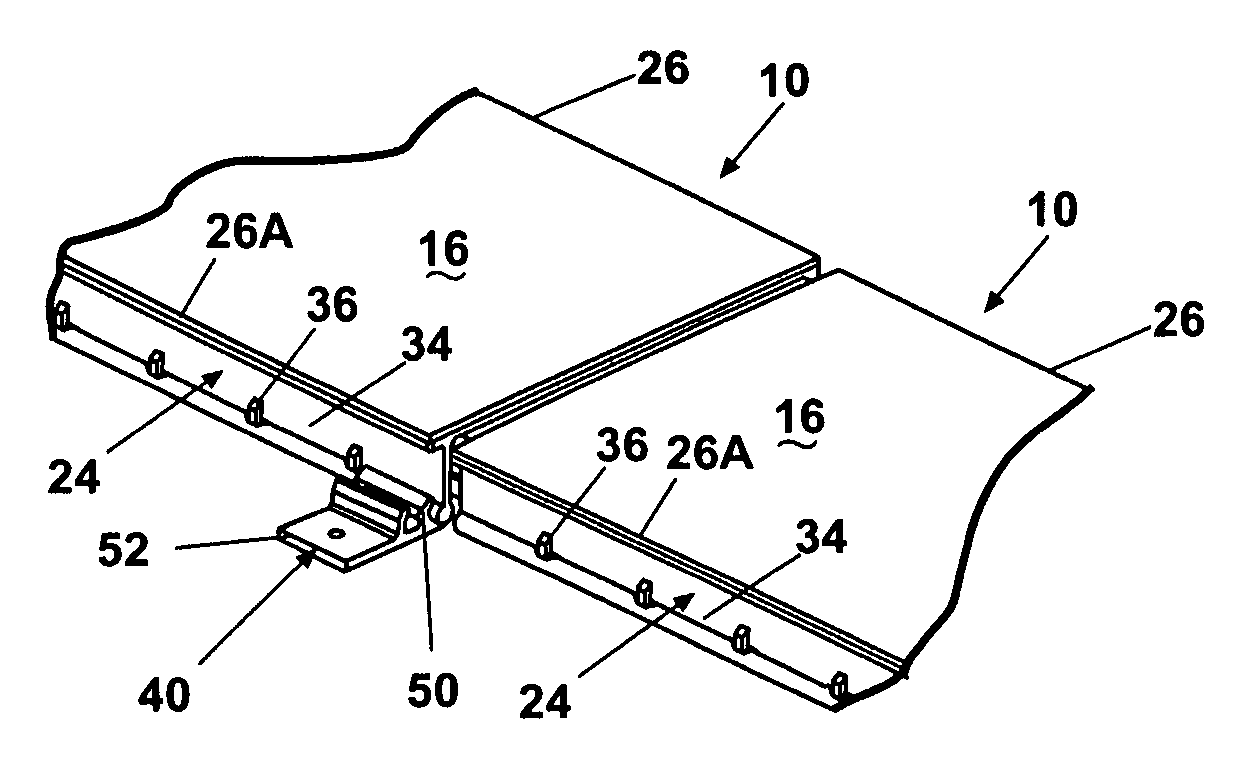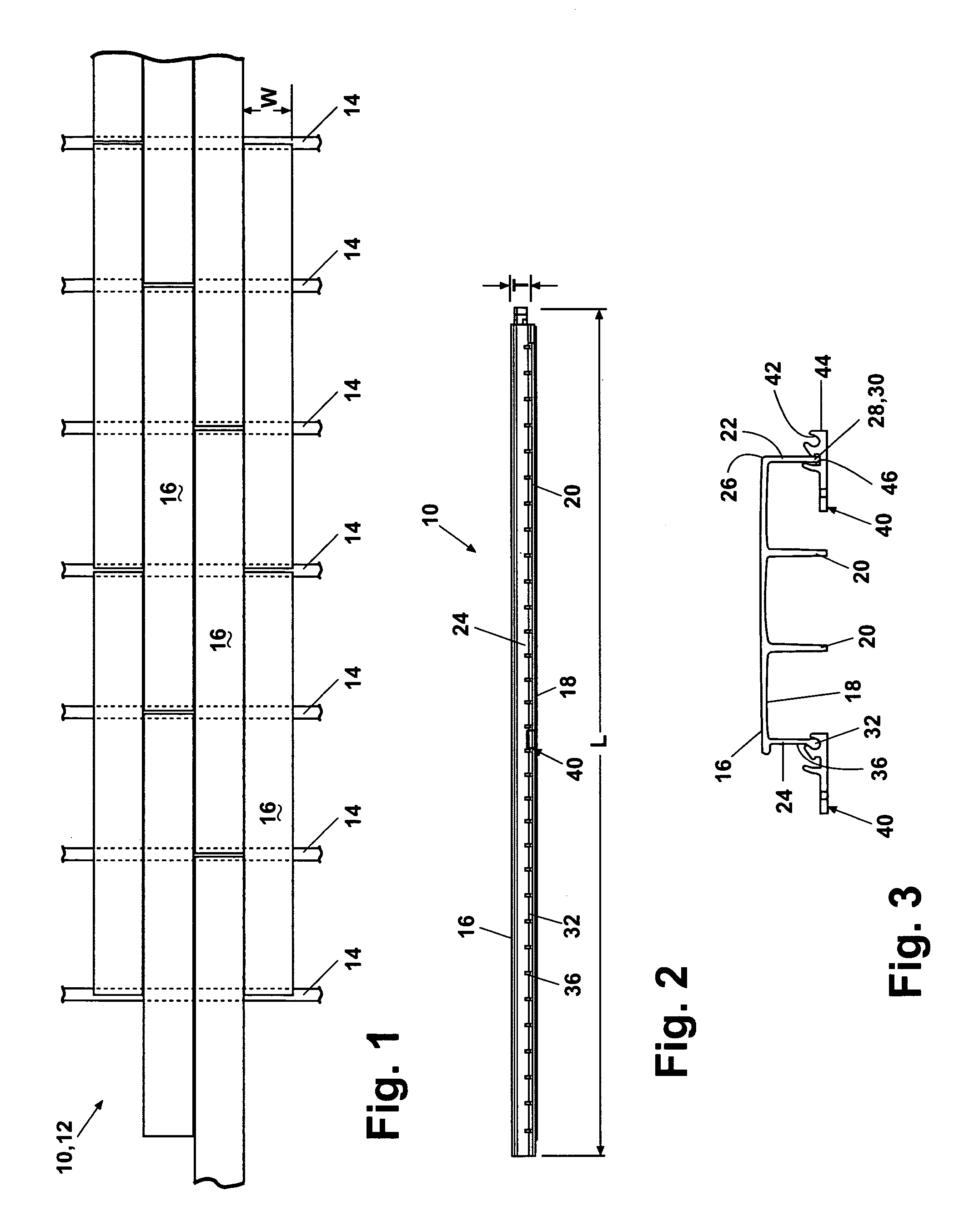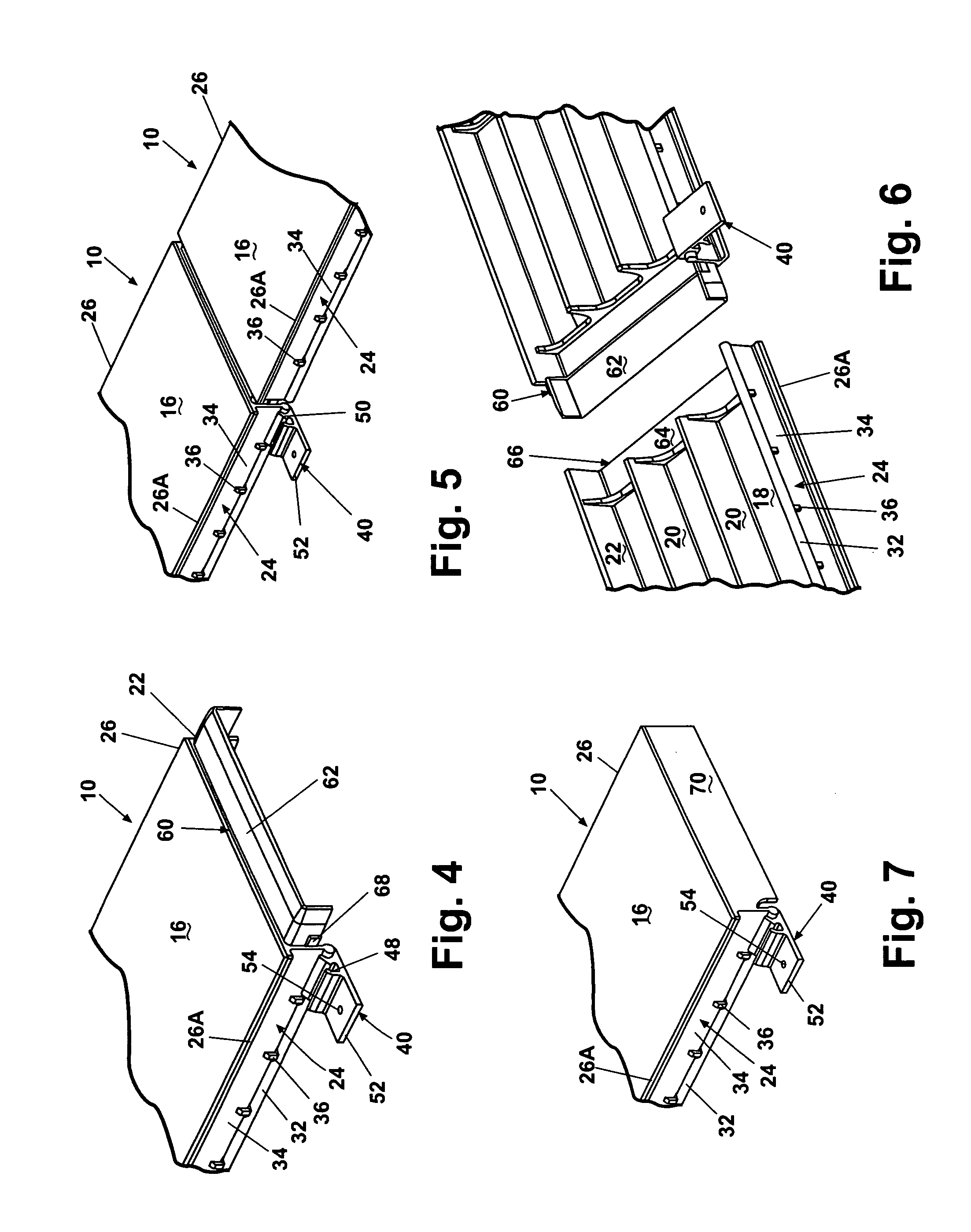Decking system
a technology of a panel system and a sleeve, which is applied in the direction of couplings, manufacturing tools, mechanical equipment, etc., can solve the problems of polymer material expansion and contraction coefficients, plank buckles and/or leave substantial gaps from shrinkag
- Summary
- Abstract
- Description
- Claims
- Application Information
AI Technical Summary
Benefits of technology
Problems solved by technology
Method used
Image
Examples
Embodiment Construction
[0022]For purposes of the following description, the terms “upper,”“lower,”“left,”“rear,”“front,”“vertical,”“horizontal” and derivatives of such terms shall relate to the invention as oriented in FIGS. 2 and 3. However, it is to be understood that the invention may assume various alternative orientations, except where expressly specified to the contrary. It is also to be understood that the specific devices and processes illustrated in the attached drawings, and described in the following specification are simply exemplary embodiments of the inventive concepts defined in the inventive concepts of this invention. Specific dimensions and other physical characteristics relating to the embodiments disclosed herein are not to be considered as limiting unless expressly stated otherwise.
[0023]The instant invention comprises an improved decking and flooring material in the form of three dimensional tabular sheets or planks 10 having a length substantially greater than its width which in tur...
PUM
| Property | Measurement | Unit |
|---|---|---|
| height | aaaaa | aaaaa |
| width | aaaaa | aaaaa |
| distance | aaaaa | aaaaa |
Abstract
Description
Claims
Application Information
 Login to View More
Login to View More - R&D
- Intellectual Property
- Life Sciences
- Materials
- Tech Scout
- Unparalleled Data Quality
- Higher Quality Content
- 60% Fewer Hallucinations
Browse by: Latest US Patents, China's latest patents, Technical Efficacy Thesaurus, Application Domain, Technology Topic, Popular Technical Reports.
© 2025 PatSnap. All rights reserved.Legal|Privacy policy|Modern Slavery Act Transparency Statement|Sitemap|About US| Contact US: help@patsnap.com



